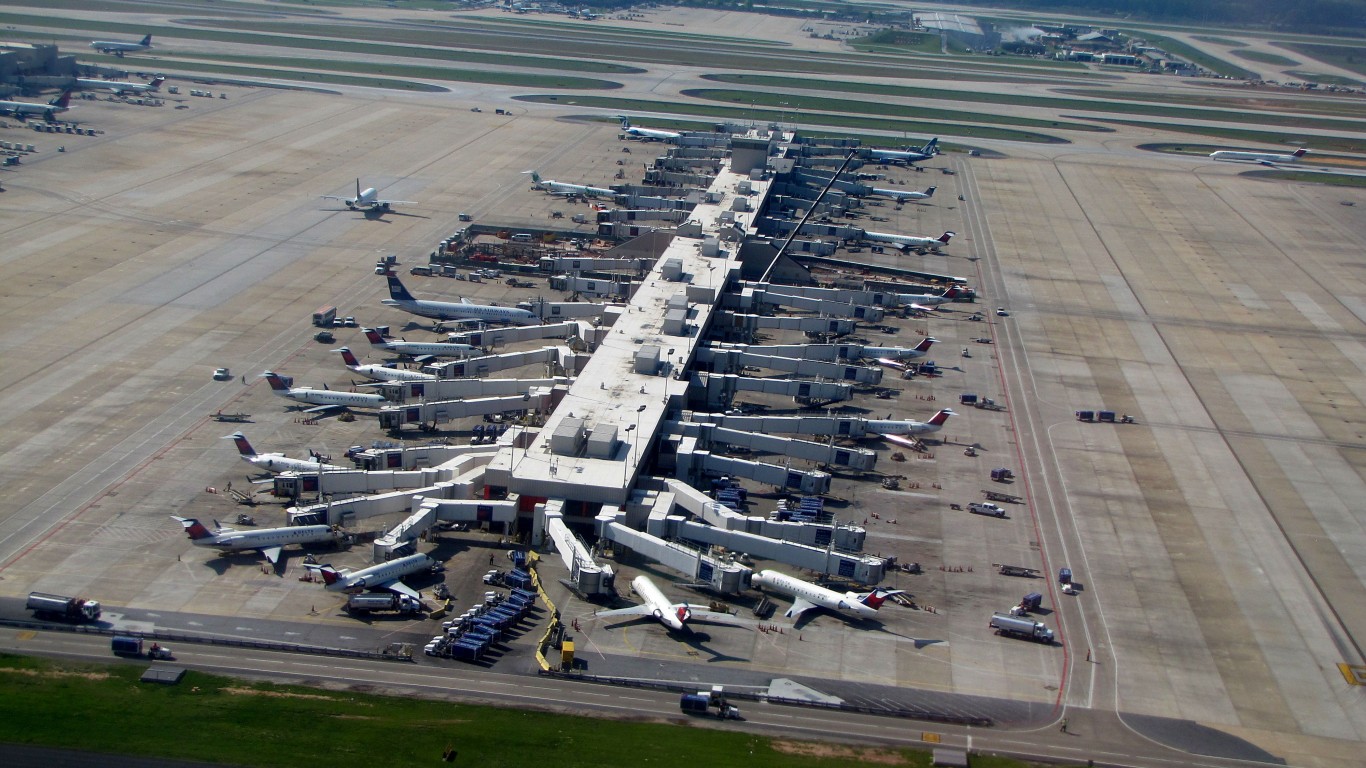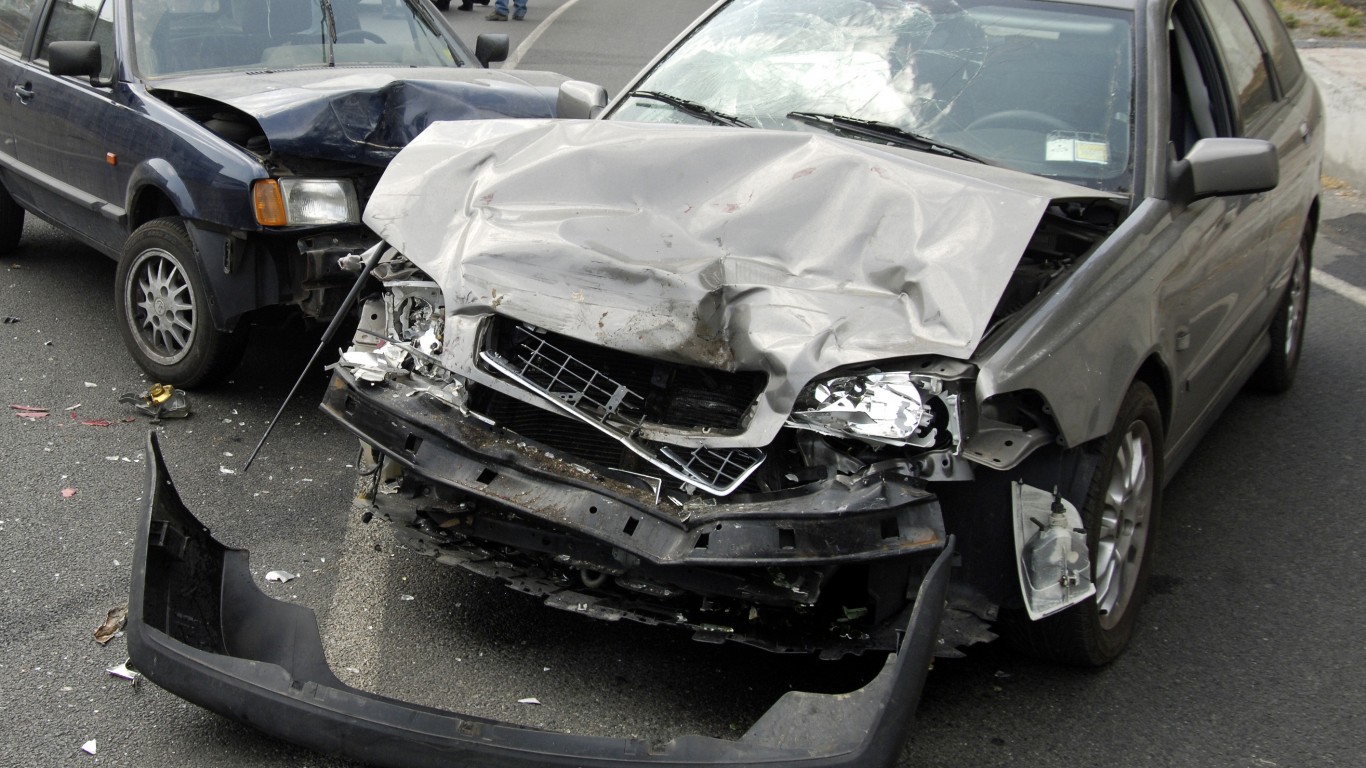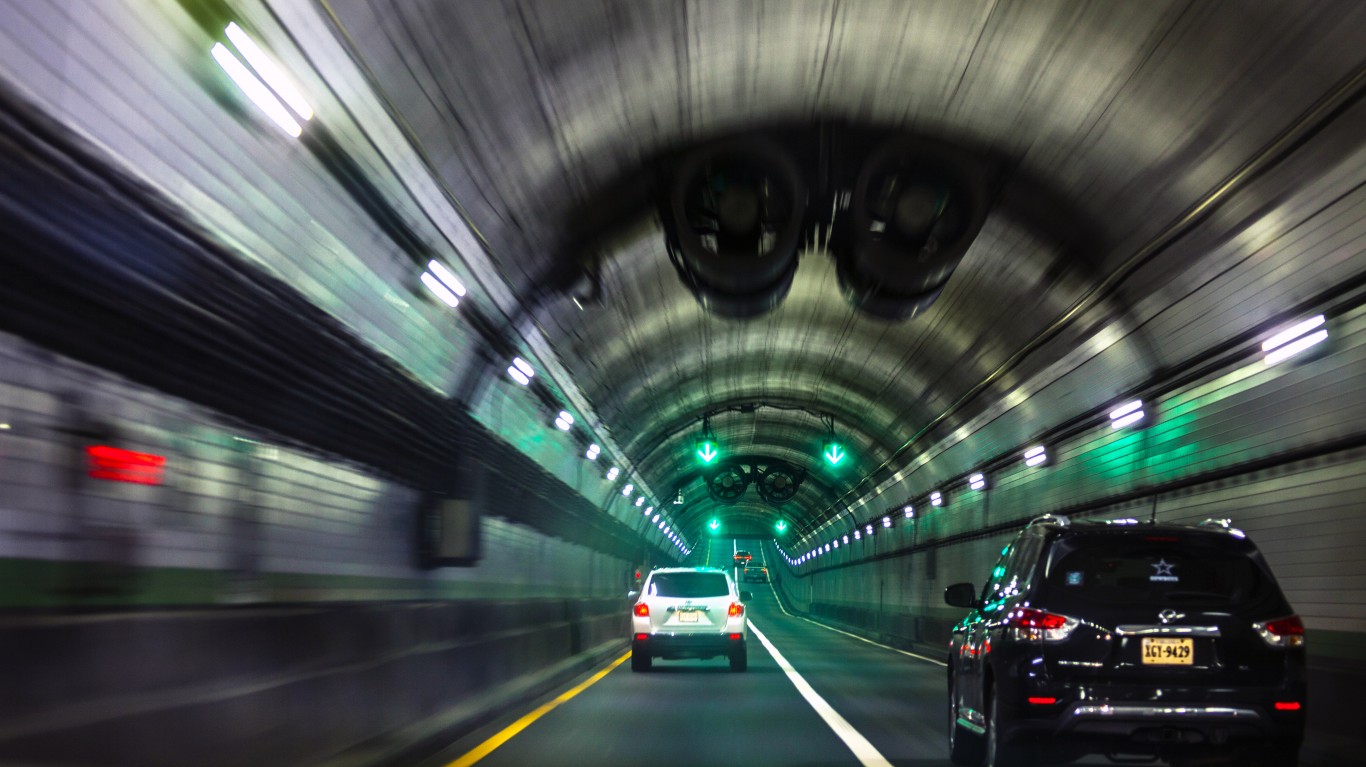
Airports are some of the worst places to travel through, yet they themselves are essential to travel in the United States. Tens of millions of flights happen each year, and tens of millions of people find themselves waiting in cramped airports looking for a table to scram down a $18 salad from a vending machine. Today, we’re taking a look at some of the most congested airports in the United States, specifically how crowded they are.
To compile this list, 24/7 Wall Street used data from the FAA, as posted on Wikipedia. The data represents the total number of passengers during 2022. Let’s get started.
10. Charlotte Douglas International Airport
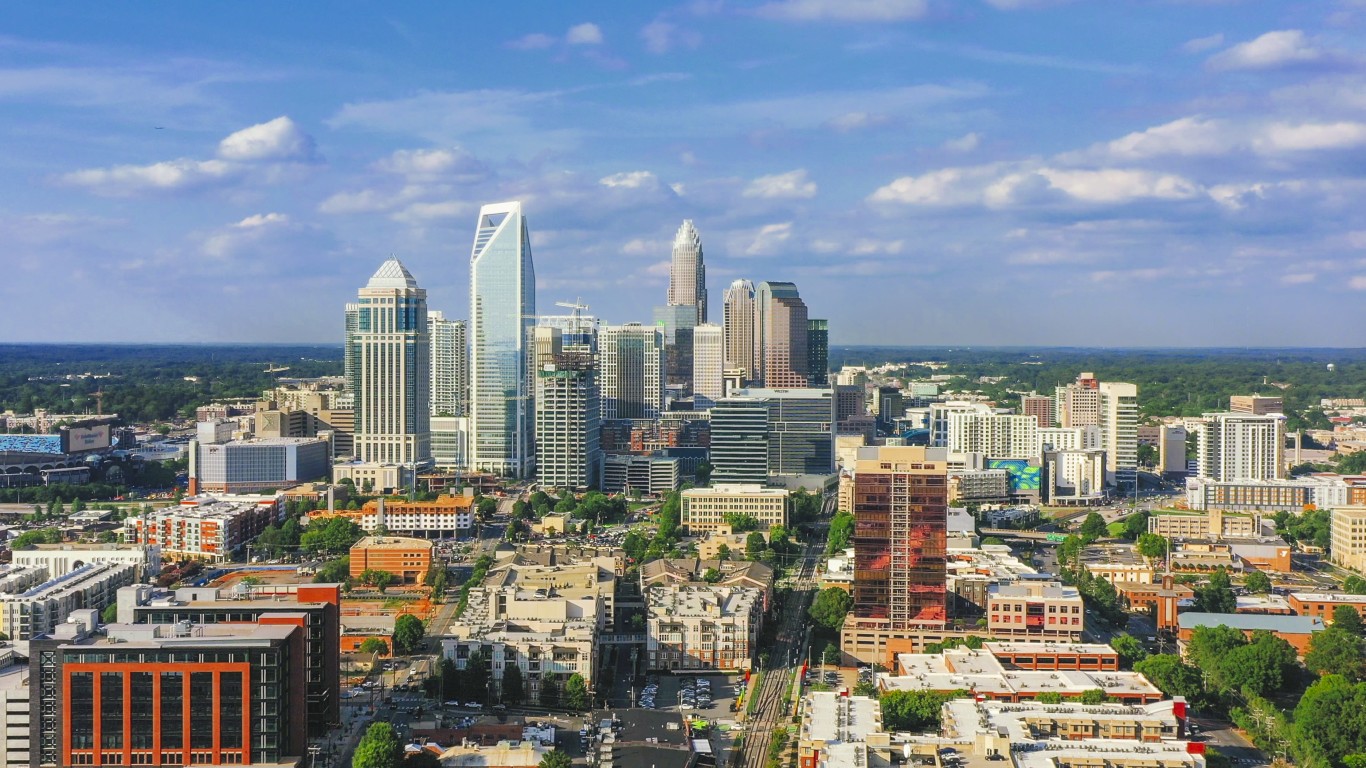
Charlotte, the Queen City, is rapidly growing, and its airport is undergoing major construction efforts. The city earns its spot as one of the major airports in the United States primarily because it’s a major American Airlines (NASDAQ: AAL) hub. Currently, around 90% of all flights from Charlotte are American Airlines, and it’s known as a “fortress hub” for Americans, which essentially just means it has a monopoly on the airport. Another example would be Delta (NYSE: DAL) in Atlanta. In 2021, Charlotte shot up to the 6th busiest airport in the United States, but it didn’t hold its higher spot for long.
- Metro Area: Charlotte
- Passenger Traffic (2022): 47,758,605
- IATA Code: CLT
9. Orlando International Airport

Historically, Florida’s busiest airport has been Orlando, but in 2022, it dropped a spot behind Miami. Still, Orlando is extremely busy and with attractions like Disney World and Universal, it will stay busy for a long time to come. Orlando operates as a hub for a few airlines, including Silver Airways, Avelo Airlines, JetBlue (NASDAQ: JBLU), Southwest (NYSE: LUV), and Spirit. Its IATA Code, MCO, doesn’t quite fit with its name (like the other airports). This is because it is referencing its former name, McCoy Airforce Base, despite it being closed in 1975 after the Vietnam War.
- Metro Area: Orlando
- Passenger Traffic (2022): 50,178,499
- IATA Code: MCO
9. Miami International Airport
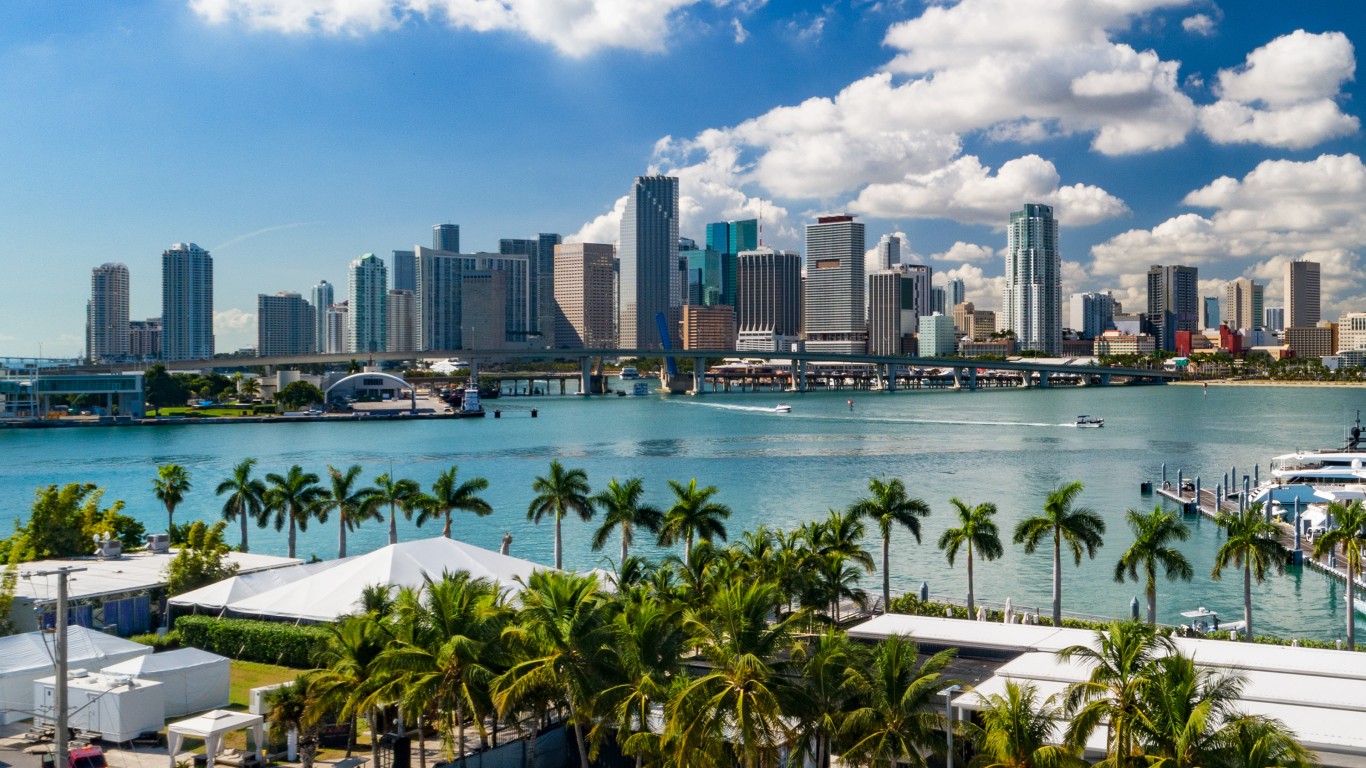
Miami is an important regional airport, but it also acts as a gateway into Latin America for much of the United States. Recently, Miami surpassed Orlando as the busiest airport in Florida. Currently, Miami and Orlando are neck and neck with passenger counts, and subsequent years could mean that either one overtakes the other. Additionally, Miami recently surpassed JFK as the busiest U.S. gateway for international passengers and also operates as one of the busiest cargo ports in the U.S.
- Metro Area: Miami
- Passenger Traffic (2022): 50,684,396
- IATA Code: MIA
7. Harry Reid International Airport
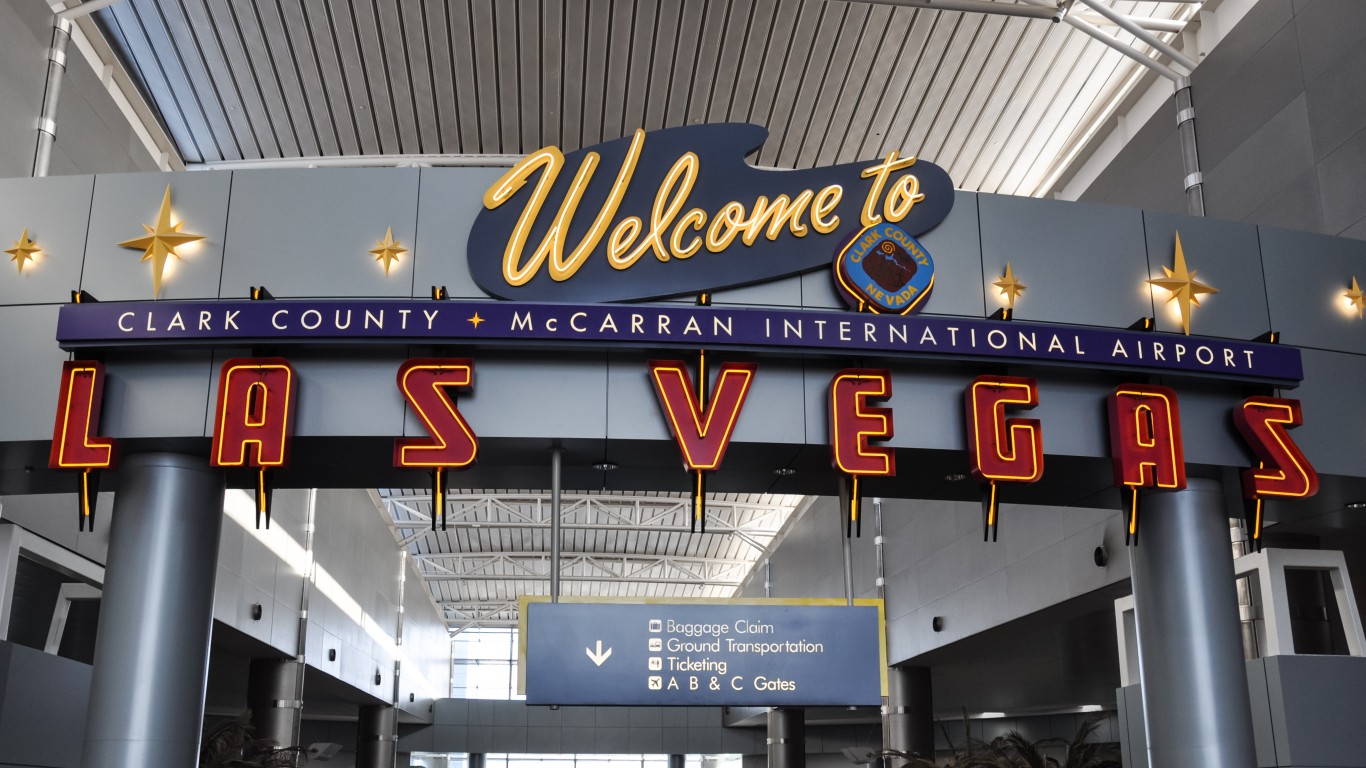
Las Vegas’ primary airport is known as Harry Reid International Airport, but this is a recent change. It was the McCarran International Airport until 2021 when it was voted to change the name due to Pat McCarran’s legacy being associated with anti-Semitism and racism. Ten months into the year after the vote, it was passed and named after the Nevada senator who had just retired, Harry Reid.
- Metro Area: Las Vegas
- Passenger Traffic (2022): 52,667,741
- IATA Code: LAS
6. John F. Kennedy International Airport

New York has three airports within its metro area: John F. Kennedy (usually shortened to JFK), LaGuardia, an airport in Queens, and Newark Liberty International, an airport located in New Jersey across the river. All three airports are in the top 20 busiest in the United States. Between them all, JFK operates primarily as an international hub and is known for long-haul flights to the rest of the world. In fact, over 90 airlines fly out of JFK, extending out to all six (inhabited) continents. It’s recognized as one of the busiest international air passenger gateways into North America.
- Metro Area: New York
- Passenger Traffic (2022): 55,175,249
- IATA Code: JFK
5. Los Angeles International Airport

The Los Angeles International Airport is a major airport in California and the primary airport for the greater Los Angeles area. It’s the largest and busiest airport along the West Coast of the United States and is known as a connection point into East Asia, Southeast Asia, Australia, and more. There are a few other airports in the region, including Burbank, John Wayne (Orange County), and Long Beach.
- Metro Area: Los Angeles
- Passenger Traffic (2022): 65,924,298
- IATA Code: LAX
4. O’Hare International Airport
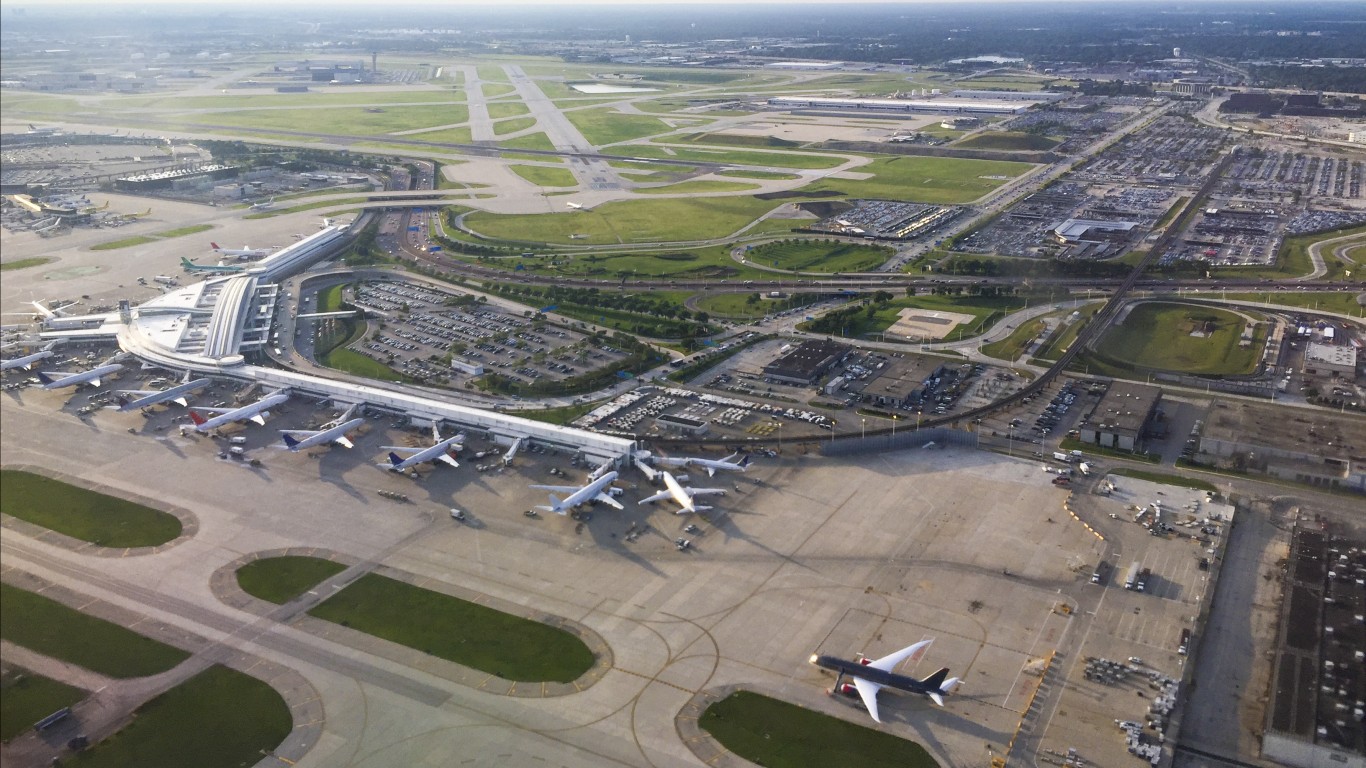
- Metro Area: Chicago
- Passenger Traffic (2022): 68,340,619
- IATA Code: ORD
Chicago has always been a transportation hub for the United States, first for rail and now for the air. It serves the major urban area of Chicago and was originally built for military transports during WWII. It was named after the first U.S. Navy aviator to receive a Medal of Honor, Edward O’Hare. Its initial construction was extremely innovative and included things like concourses, jet bridges, and more, establishing itself as a key player for decades after.
3. Denver International Airport
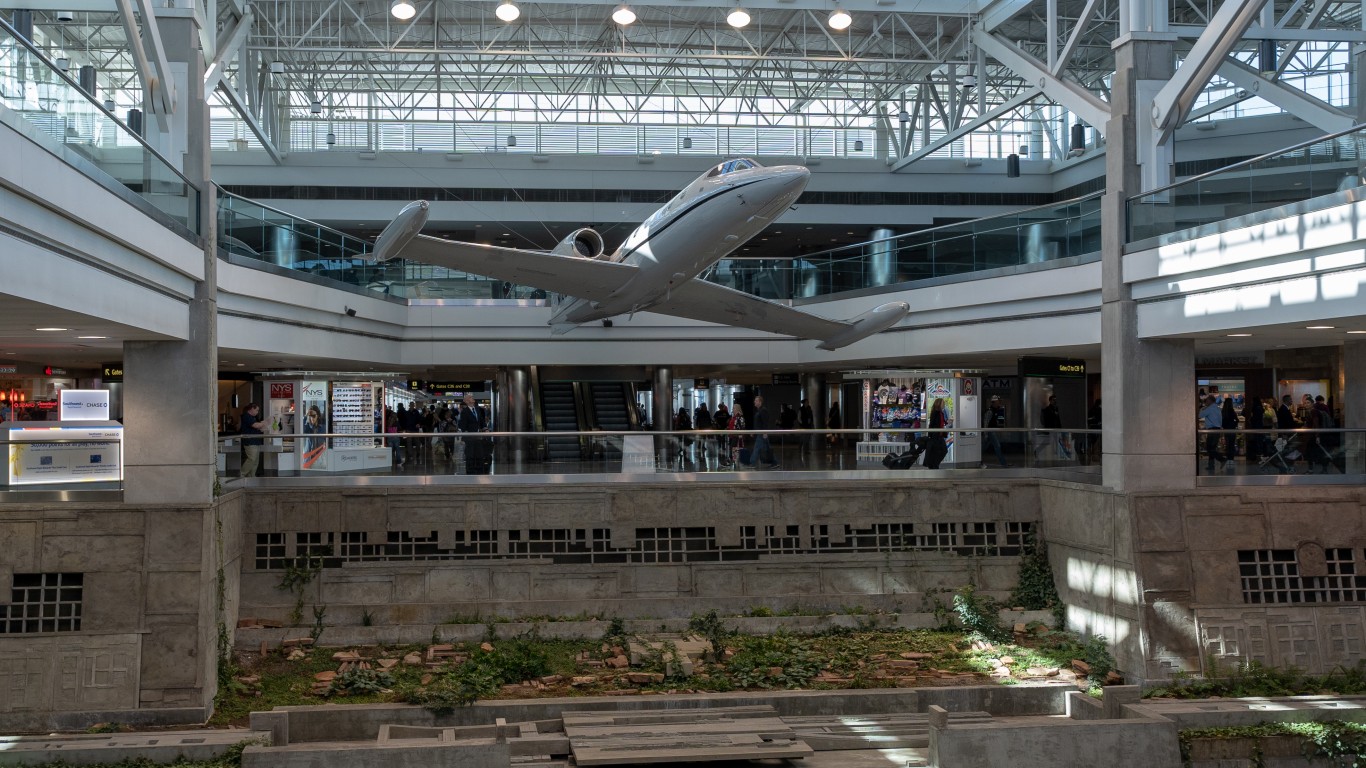
Few airports have a cult following like Denver International. The airport is a major hub due to its central location in the United States, acting as a stopping point for connecting flights across the country (both east to west and north to south). Unique to Denver, however, are the conspiracies that surround it. There are multiple conspiracy theories, usually involving speculations about secret underground bunkers, alleged ties to the Illuminati, and mysterious artwork with hidden messages. Denver sometimes plays into these theories, but nothing overt has ever been proven.
- Metro Area: Denver
- Passenger Traffic (2022): 69,286,461
- IATA Code: DEN
2. Dallas/Fort Worth International Airport
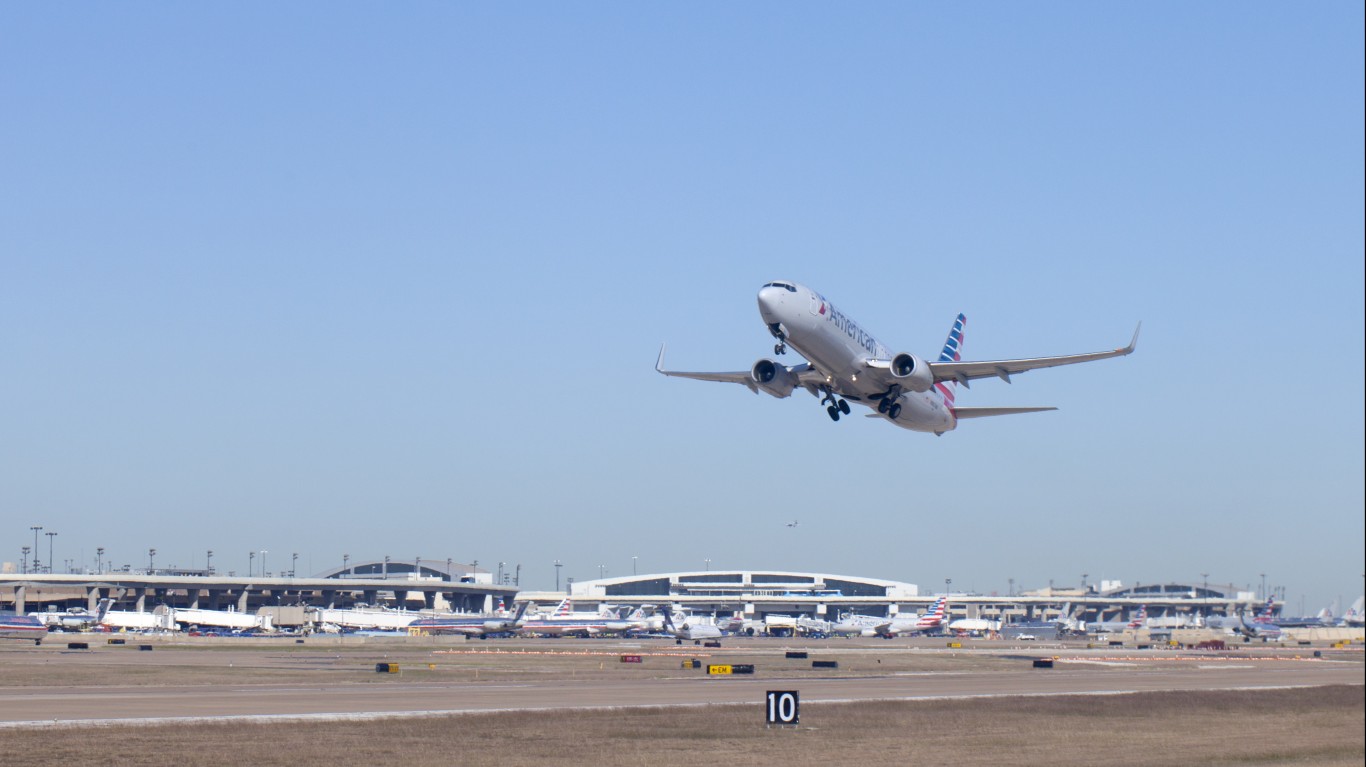
Dallas/Fort Worth (usually DFW) is one of the largest airports in the United States (only behind Denver in terms of acreage). It was the second busiest by passenger travel in 2022 and is recognized as the third-busiest globally in terms of aircraft movement. Incredibly, DFW has its own zip code (75261) and its own city designation (DFW Airport, Texas). Additionally, DFW has its own designated police, firefighters station, and medical services. It used to have its own internal emergency room, but it closed some time back. It also has more nonstop destinations than any airport in North America, and every major city in the Continental U.S. is within a four-hour flight.
- Metro Area: Dallas-Fort Worth
- Passenger Traffic (2022): 73,362,946
- IATA Code: DFW
1. Hartsfield-Jackson International Airport
No airport in the world is as pivotal as Hartsfield-Jackson International Airport. The Atlanta Airport (as it’s often called) is about 10 miles away from Downtown Atlanta and covers 4,700 acres. It has five parallel runways, all of which are essential to its status as the busiest airport by passenger traffic. In 2022, it had over 20 million more passengers than its closest domestic competitor, DFW. Additionally, Atlanta has held its title since 1998. It was originally named after two of Atlanta’s mayors, William B. Hartsfield and Maynard Jackson. Currently, it acts as the hub for Delta Air Lines. Delta’s headquarters in Atlanta is also the world’s largest airline hub. Besides Delta, a few budget airlines operate major lines out of Atlanta, including Frontier and Southwest.
- Metro Area: Atlanta
- Passenger Traffic (2022): 93,699,630
- IATA Code: ATL
Are You Still Paying With a Debit Card?
The average American spends $17,274 on debit cards a year, and it’s a HUGE mistake. First, debit cards don’t have the same fraud protections as credit cards. Once your money is gone, it’s gone. But more importantly you can actually get something back from this spending every time you swipe.
Issuers are handing out wild bonuses right now. With some you can earn up to 5% back on every purchase. That’s like getting a 5% discount on everything you buy!
Our top pick is kind of hard to imagine. Not only does it pay up to 5% back, it also includes a $200 cash back reward in the first six months, a 0% intro APR, and…. $0 annual fee. It’s quite literally free money for any one that uses a card regularly. Click here to learn more!
Flywheel Publishing has partnered with CardRatings to provide coverage of credit card products. Flywheel Publishing and CardRatings may receive a commission from card issuers.
Thank you for reading! Have some feedback for us?
Contact the 24/7 Wall St. editorial team.
